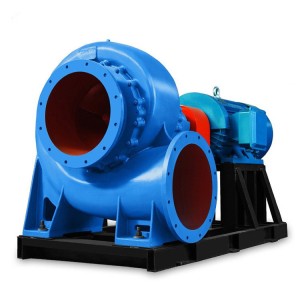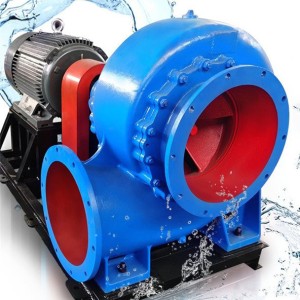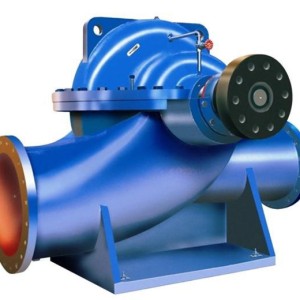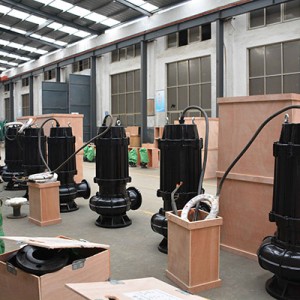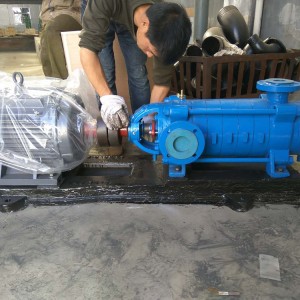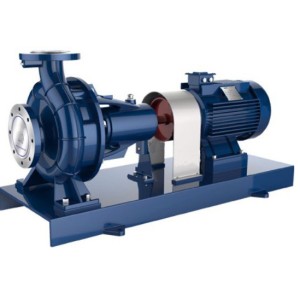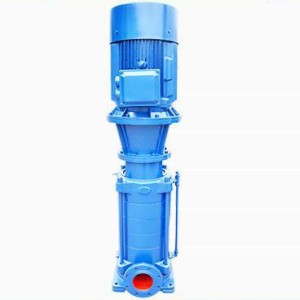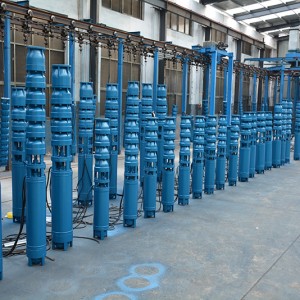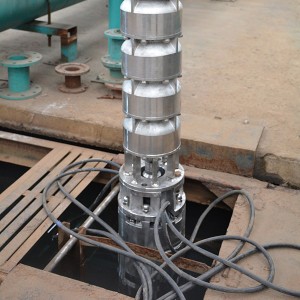The submersible sewage pump is a pump product that is connected with a pump and a motor, and works under the liquid at the same time. Compared with a general horizontal pump or a vertical sewage pump, the submersible sewage pump has obvious advantages in the following aspects:
1. Compact structure and small footprint. Since the submersible sewage pump works under the liquid, it can be directly installed in the sewage tank. There is no need to build a special pump room to install pumps and machines, which can save a lot of land and infrastructure costs.
2. Convenient installation and maintenance. Small submersible sewage pumps can be installed freely. Large-scale submersible sewage pumps are generally equipped with automatic coupling devices for automatic installation. Installation and maintenance are quite convenient.
3. Long continuous operation time. Since the submersible sewage pump and the motor are coaxial, the shaft is short, and the weight of the rotating parts is light, the load (radial) on the bearing is relatively small, and the service life is much longer than that of the general pump.
4. There are no problems such as cavitation damage and irrigation and water diversion. In particular, the latter point brings great convenience to the operator.
5. Low vibration and noise, low motor temperature rise, and no pollution to the environment.
It is precisely because of the above advantages that submersible sewage pumps have received more and more attention from people, and the scope of use has become more and more extensive. Site drainage, liquid feed, etc.
It plays a very important role in various industries such as municipal engineering, industry, hospitals, architecture, restaurants, and water conservancy construction.
But everything is divided into two. The most critical issue for submersible sewage pumps is reliability, because the use of submersible sewage pumps is under liquid; the conveyed medium is some mixed liquid containing solid materials; The pump and the motor are very close; the pump is a vertical arrangement, and the weight of the rotating parts is in the same direction as the impeller under water pressure. These problems make the requirements of submersible sewage pumps in terms of sealing, motor carrying capacity, bearing arrangement and selection, etc. higher than that of ordinary sewage pumps.
In order to improve the life of submersible sewage pumps, most manufacturers at home and abroad are now thinking of ways to protect the pumps, that is, they can automatically alarm when the pumps leak, overload, over-temperature and other faults, and automatically shut down for repairs. However, we believe that it is necessary to set up a protection system in the submersible sewage pump, which can effectively protect the safe operation of the electric pump.
But this is not the key to the problem. The protection system is just a remedy after the pump fails, and it is a relatively passive method. The key to the problem should be to start from the root and completely solve the problems of the pump in terms of sealing and overload. This is a more proactive approach. For this reason, we apply the auxiliary impeller fluid dynamic sealing technology and the pump’s no-overload design technology to the submersible sewage pump, which greatly improves the reliability and carrying capacity of the pump seal and prolongs the service life of the pump.
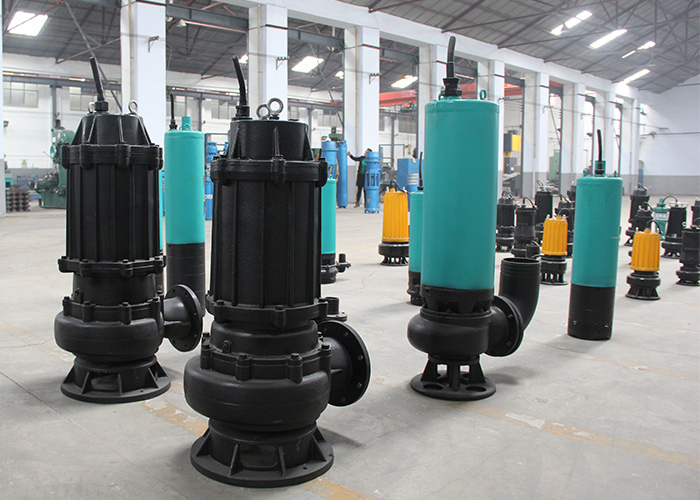
1. Application of auxiliary impeller hydrodynamic sealing technology
The so-called auxiliary impeller hydrodynamic seal refers to the installation of an open impeller in the opposite direction and coaxially near the back of the pump’s impeller rear cover. When the pump is working, the auxiliary impeller rotates with the main shaft of the pump, and the liquid in the auxiliary impeller will also rotate together. The rotating liquid will generate an outward centrifugal force. The pressure at the seal. On the other hand, the solid particles in the medium are prevented from entering the friction pair of the mechanical seal, which reduces the wear of the mechanical seal abrasive block and prolongs its service life.
In addition to the sealing effect, the auxiliary impeller can also reduce the axial force. In the submersible sewage pump, the axial force is mainly composed of the differential pressure force of the liquid acting on the impeller and the gravity of the entire rotating part. The direction of action of the two forces is the same, and the resultant force is formed by the addition of the two forces. It can be seen that when the performance parameters are exactly the same, the axial force of the submersible sewage pump is greater than that of the general horizontal pump, and the difficulty of balancing is more difficult than that of the vertical pump. Therefore, in the submersible sewage pump, the reason for the easy damage of the bearing is also related to the large axial force.
And if the auxiliary impeller is installed, the direction of the pressure difference force acting on the auxiliary impeller is opposite to the resultant force of the above two forces, which can offset part of the axial force, which also prolongs the life of the bearing. However, the use of the auxiliary impeller sealing system also has a disadvantage, that is, a part of the energy is consumed on the auxiliary impeller, generally about 3%, but as long as the design is reasonable, this part of the loss can be reduced to a minimum.
2, the application of the pump’s no-overload design technology
In a general centrifugal pump, the power always increases with the increase of the flow, that is to say, the power curve is a curve that rises with the increase of the flow, which will bring a problem to the use of the pump: when the pump is in When the design operating point is running, generally speaking, the power of the pump is less than the rated power of the motor. This pump is safe to use; but when the pump head decreases, the flow rate will increase (as can be seen from the pump performance curve), The power also increases accordingly.
When the flow exceeds the design operating point flow and reaches a certain value, the input power of the pump may exceed the rated power of the motor and cause the motor to overload and burn. When the motor is overloaded, either the protection system will act to stop the pump; or the protection system will fail and the motor will burn out.
The head of the pump is lower than the head of the design working condition. It is often encountered in practice. One situation is that the head of the pump is selected too high when the pump is selected, but the pump is actually used to reduce the head. Used; another situation is that the working condition of the pump is not very easy to determine in use, in other words the flow of the pump needs to be adjusted frequently; there is another situation that the pump needs to be used frequently in changing locations. These three conditions may overload the pump and affect the reliability of the pump. It can be said that for pumps without full-head characteristics (including submersible sewage pumps), their use range will be largely limited.
The so-called full-head characteristic (also called non-overload characteristic) means that the power curve rises very slowly with the increase in flow rate. More ideally, when the flow rate increases to a certain value, the power will not rise again, but will be somewhat different. Decrease, that is to say, the power curve is a curve with hump. If this is the case, we only need to choose the power value of the motor rated power slightly exceeding the hump point, then in the entire range from 0 flow to maximum flow, no matter which one you are in When running at the operating point, the power of the pump will not exceed the power of the motor and overload the pump. For a pump with this performance, it will be very convenient and reliable whether it is selected or used. In addition, the motor power does not need to be too large, which can save considerable equipment costs.
Post time: 2021-12-07


